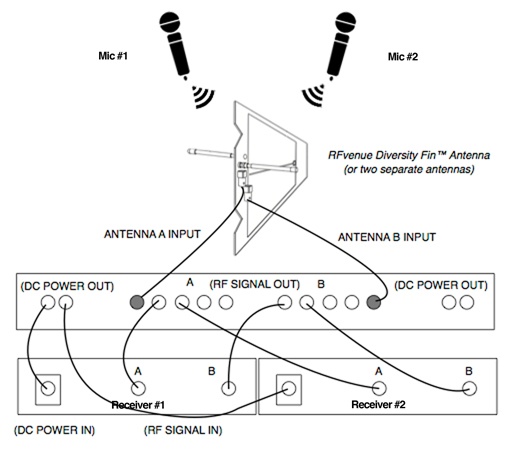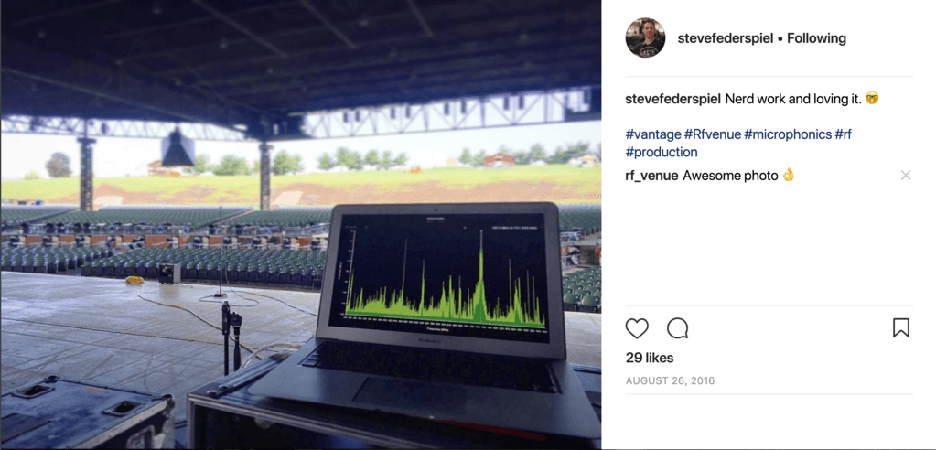

#Wireless microphone signal path full
Ground lift for the Cat5/Cat6 cable’s ground path to mitigate ground-loop noiseĤ x bumpers used to protect Ethernet connectors and ground-lift switch from damageĭouble-sided, military-spec grade circuit board for durability, full ground plane, and a marked reduction in radio-frequency interference Protective steel handle facilitates convenient transportation In total, you’ll have the ability to split and route mic-level signal to three different locations.Ī ground-lift switch helps eliminate any noise issues on the Cat5 or Cat6 line, while a steel handle provides easy transport, and four bumpers protect the Ethernet jacks and ground-lift switch from wear and tear.Ĥ x XLR through-outputs with mic-level transformer isolation for additional routingġ x Ethernet through-output for feeding additional Catapult models

The other is a throughput, and can be implementing in routing signal to additional Catapults. One is an output, for use with the RX4M on the receiving end. You’ll also note the two RJ45-type etherCON connections. You can run phantom power over the snake as long as you use a shielded Cat5 cable. The Catapult TX4M gives you four XLR input jacks, as well as four XLR transformer-balanced through-outputs optimized for mic-level signal. It’s also suitable for system contractors who can now utilize pre-wired networks to move audio throughout disparate rooms. As such, it’s useful in live-sound reinforcement applications, as it allows live sound stage techs to use relatively affordable cable to secure quality audio connections around large stages and venues. The Radial Engineering Catapult TX4M is a four-channel snake that is designed to route four channels of mic-level signal across long distances using shielded Cat5/Cat6 cable, doing so with little to no signal degradation. The wave is generated with fewer intermediate steps and produces a signal with a thin sideband through a digital wireless microphone system.Catapult TX4M | Buy Radial Engineering direct from Singapore’s Authorized Distributor for warranty assurance.

Sideband allows the user to pack many channels of audio into the same available bandwidth. Digital wireless microphones are more efficient because the carriers used in digital signals have less sideband. Digital wireless is considered as one of the most powerful and widely available tools for disposal. Using digital wireless microphone offers performance speculations that satisfy the needs of the users. Latency that affects the digital wireless microphones system is caused different points in the signal path. One of the main drawbacks of a digital wireless system is latency. The way of transmission of two frequencies is timed that allows the transmitter to speak to the receiver in a language in such a way that they both understand. In digital system changes in voltage are turned into waves of one of two frequencies.

In an analog system, the changes in voltage that correspond to change in audio wave frequency and amplitude are turned into a radio wave. Using digital wireless microphones will have a high-quality sound effect. These are the reason why a digital wireless microphone is better than analog. Higher channels counts are possible in digital wireless microphones systems when compared to analog wireless microphone systems. Digital wireless microphones systems have longer battery life than the analog microphone systems. The audio will be clear without any noise. If any RF noise appears on the audio it will not affect the audio quality in digital systems. Why digital wireless microphone is better than analogĭigital wireless microphone systems convert analog audio to digital audio. The entire above mentioned are the details for analog vs digital microphones. Proper frequency coordination and planning is imperative within the UHF space for both analog wireless system and digital wireless system. RF interference can happen to either the analog wireless microphone system or digital wireless microphone system. Some digital systems allow up to twice as many compatible microphones in the same RF footprint as the analog counterpart. In a digital wireless system, the amount of latency varies depending on the processing qualities. LatencyĪnalog wireless microphones have virtually zero latency. Analog wireless systems have to compress the dynamic range of the audio. Digital wireless microphone system will tend to have better audio from the dynamic range and frequent perspective. Based on the sound quality it is difficult to decide which will be better either analog or digital microphones are.


 0 kommentar(er)
0 kommentar(er)
